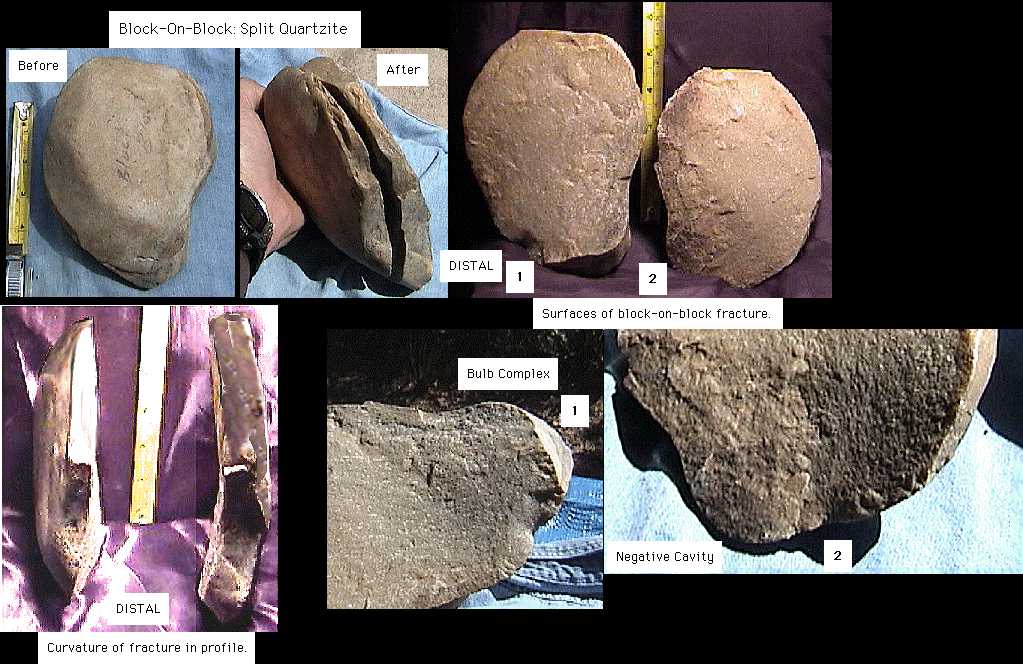 Quartzite 1
Quartzite 1
HOME
BLOCK-ON-BLOCK flaking consists of hitting an anvil or boulder with a hand-held core. (It has also been referred to as "on anvil" flaking, but this is confusing given the fact that bipolar reduction is also carried out on an anvil.) The block-on-block core is always hit on its distal end, the region you cannot see with your eye, if you're smart. Tossing a boulder off a cliff onto a larger boulder can be considered an uncontrolled form of block-on-block reduction when the tossed boulder breaks against the latter. Conversely, if the tossed boulder turns out to break the boulder it is thrown against, it would be an instance of uncontrolled direct percussion.
Generally block-on-block reduction is something you do not do with obsidian, but larger cobbles and boulders of quartzite, felsite, and other metamorphic and igneous types may be initially broken this way, and thereby exposing fresh edges for more controlled reduction strategies.
Two quartzite specimens are shown here. These were broken in a controlled way insofar as both were hand-held in the proximal region of the core when the distal end struck the anvil. Both cleaved after a single hit. Bulb complexes and features are more diffuse and less defined than on direct percussion specimens; this may be due in part to the quartzite material, in part to the broad area of contact.
As in all cases for this website, the Proximal and Distal ends of the cores are always represented by their positioning in the photos unless otherwise noted, eg. proximal is top, distal is bottom.
Chris Hardaker
Tucson, Arizona